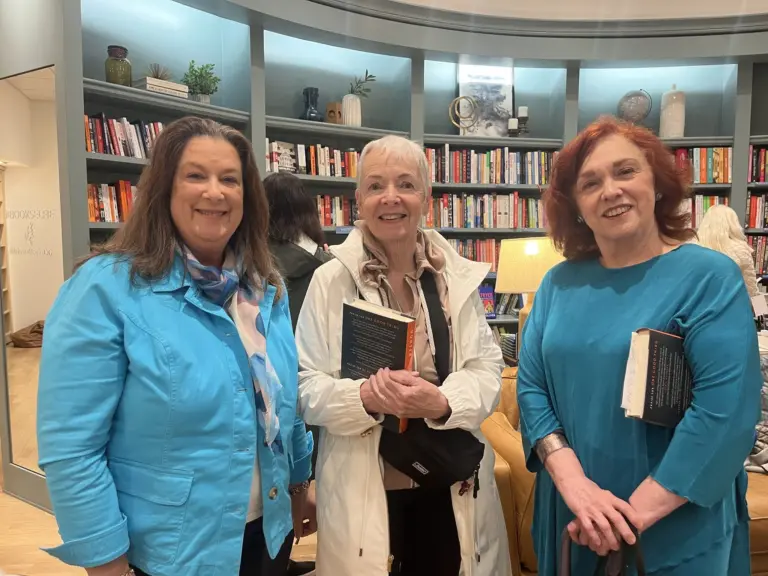 By Julia Chiappetta
By Julia Chiappetta
Sentinel Columnist
I tried homeopathy when I lived in Florida from 2002 to 2007. I had met a master homeopath and doctor who was an expert and had a gift for this field of medicine through a friend at my church.
At first I was a bit skeptical, but as he educated me and I researched more on own, I decided to give it a try. The system for diagnosing where you have needs is done through a series of muscle testing, which involved my holding a remedy or group of remedies in one hand and the doctor telling me to tighten my arm muscles and hold them out in front or to the side while I resisted him trying to push them down.
It became clear that with certain bottles I could hold off his pushing, and with others my arms would collapse quickly, try as I might to resist. When the testing was completed, he lined up all the bottles that I was holding when my arms collapsed and explained what they represented in terms of my body and mind, and what he felt I needed support with. In every case, the remedy he cited represented physical and emotional issues I had or had been dealing with in my life.
So I left my first visit with a small box and about 12 glass vials filled with tiny, white, sweet-tasting pellets that he created and that I would take under my tongue each morning. Within several weeks many of the conditions I had been dealing with were improving, and I soon became of believer in adding this system of medicine to my wellness protocol. It has been years since I left Florida, and I miss Dr. Thom. When I recently came across my little box, it gave me a flood of memories and the incentive to try to find another master of homeopathy to reinstate this protocol into my healing platform and to share its origins with you.
Christian Friedrich Samuel Hahnemann (1755—1843), a German physician, is known to history as the father of homeopathy, a system of alternative medicine that has enjoyed a comeback in recent years.
Hahnemann studied medicine at Leipzig before moving to Vienna and earning his medical degree (with honors) at the University of Erlangen in 1779. After completing his formal studies, he became a village doctor, got married, and had 11 children. Around 1784 he left his medical practice to work as a translator of scientific and medical textbooks; he also took a keen interest in what we would now call medical research.
Hahnemann became critical of the medicine of his day (which included such practices as bloodletting), claiming it sometimes did patients more harm than good. He is quoted as saying, “My sense of duty would not easily allow me to treat the unknown pathological state of my suffering brethren with these unknown medicines. The thought of becoming in this way a murderer or malefactor towards the life of my fellow human beings was most terrible to me, so terrible and disturbing that I wholly gave up my practice in the first years of my married life and occupied myself solely with chemistry and writing.”
While translating William Cullen’s “A Treatise on the Materia Medica,” Hahnemann came across the observation that the astringent quality of cinchona, derived from the bark of a Peruvian tree, was effective in treating malaria. He noticed that other astringent substances did not seem to ease malaria, and so began further research.
Testing cinchona on himself, he found that it induced malaria-like symptoms. Eventually his research led him to formulate the theory: “That which can produce a set of symptoms in a healthy individual, can treat a sick individual who is manifesting a similar set of symptoms.” The short version, “like cures like,” became homeopathy’s bedrock postulate.
Homeopathy is safe, and unlike other medicines, its remedies usually do not cause any side effects or structural damage. Homeopathic medicines act by stimulating the body’s own defenses and healing powers.
Homeopathy offers curative treatment—as opposed to palliative—for a large number of chronic ailments, and if administered properly may give faster results than other systems of medicine. Taking a remedy is easy, as they are dispensed as sweet sugar pills under your tongue.
Homeopathy recognizes that each person is unique. Treatment is devised according to your individual needs and works by stimulating the body’s innate healing ability. Although the medicines are gentle, the results can be rapid, powerful and long lasting. Remedies are not addictive and they produce no toxic side effects. Homeopathy helps to boost the body’s immune system and is much less costly than traditional treatments.
Remember to do something good for your body and mind this week. Take a long walk or hike, run barefoot on the beach, watch a sunset or hug a friend for no reason other than to tell them you love and appreciate that they are in your life. Give back to one of the amazing non-profits in our town doing great work to care for the most needy, and don’t forget to drink or eat something green!
The grass in my yard is organic, that means no pesticides (which are killing us and our pets). It is so soft, green and thick, with a scattering of glorious dandelions, but I had to stop and take in one small, red, baby tulip growing in the midst of a small white bush that my mom had planted a few years back. It gave me such a lift to see this tulip, and I realized such beauty in that moment of solitude. Let’s love and encourage one another with the gifts that God has given to us, and see the beauty in each day.
Julia Chiappetta is the author of “Breast Cancer: The Notebook” (Gemini Media, 2006) and is also the owner of Julia Chiappetta Consulting. She lives in Cos Cob. More information and past columns can be found at JuliaChiappetta.com.



